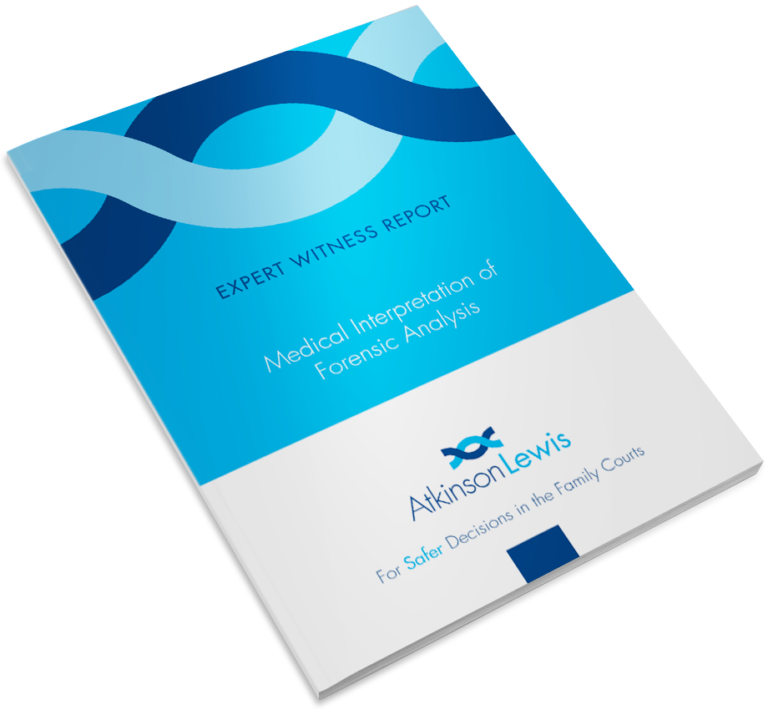Hair Drug Testing
- Screening for: Sustained Drug Abuse, Classes A-C
- Detection Window: 10 days to 6 months +
When you’re testing a parent for signs of drug abuse, hair strand analysis is your most reliable option
Fluids like saliva and urine can give you a recent snapshot, if you’re monitoring the parent week by week. But if you’re looking to prove – or disprove – a long-term drug habit, only hair can give you the detail of what’s been used and when.
As with hair alcohol testing, all we need is a 3-6cm sample, cut from the back of the head. As hair typically grows at 1cm per month, a single strand can hold 6 months data or more, with a detection window from 10 days before the date of collection.
The result is a kind of “black box recording” that plays back the whole story, revealing multiple or variable use of any common drug.
But it doesn’t end there. The lab analysis is reviewed by a senior biochemist, then passed to a medical expert for interpretation. So the final report offers more than pure forensic data – it offers context and recommendations to the Family Court.
What are we testing for?
As standard, we run a 9 Panel Drug Test to identify the most common substances in Classes A-C:
CLASS A:
- Cocaine
- Opiates
- Methadone
CLASS B:
- Amphetamine
- Methamphetamines
- Cannabinoids
- Ketamine
CLASS C:
- Benzodiazepines
- Tramadol
We test for each drug and its metabolites, with a turnaround time from 7 working Days – including lab analysis and medical review.
By arrangement, we can also test for other drugs, including:
- Mephedrone
- Buprenorphine (Subutex)
- Ritalin
- Steroids
- Pregabalin
- Quetiapine
- Hypnotic Sedatives
- Gabapentin
- Antidepressants: Citalopram, Fluoxetine, Lorazepam, Paroxetine, Promethazine, Sertraline, Zopiclone, Trazadone and more
- Cathinone Group
- Opioids Group
- Propoxyphene
- Amitriptyline
- Propranolol
- Magic Mushrooms
- Mirtazapine
- Carbamazepine
- Hallucinogenics: PCP, LSD, Mescaline
- Legal Highs / NPS: Synthetic Cannabinoids, Synthetic Cathinones, Synthetic Hallucinogens
Where does Medical Interpretation fit in…and why?
Lab data is a starting point, but it should never be the final arbiter. There are too many “wildcards” – variables and unknown factors that could sway test results and lead to a harmful verdict.
The Society of Hair Testing recognises this risk of variation. In a recent inter-laboratory test, they passed all labs that came within plus or minus 25% of the mean (average) figure.
That’s a staggering allowance for error, when the welfare of a child is at stake.
And while we can be confident in the results produced by our lab partners (who took part in this test and fell within 3% of the mean), this still highlights the need to look beyond the lab’s conclusions.
So what are these wildcard issues that cast a shadow of doubt?
Broadly, they’re a mix of testing limitations and behavioural matters. For example:
- Hair testing tells you when there’s a trace of a drug, but it won’t show level of use. So for any given bout, there’s no way of telling a recreational user from an addict.
- There’s a risk of “red herring” data, from medicines containing amphetamine or barbiturates.
- Data won’t allow for contaminants, like passive exposure to cannabis.
- Tampering is rife – parents often use bleach or hair dyes in a bid to mask the evidence.
- Personal history makes a difference. For example, amphetamine users start with a manic energy burst, but repeated use sends them into a slump – so the parent’s behaviour will depend on how long they’ve been using.
Any one of these issues could skew the end result. On the one hand, it could downplay the risk and return the child to an unsafe home environment. While on the other, it could disguise a parent’s attempt to “get clean” – then sway decisions like the period of protection or right to supervised access.
This can’t be overlooked. The court needs to know that all potential variables have been accounted for.
Of course, some may be picked up by the lab. For example, a lab with the latest sensitive equipment can identify signs of tampering and adjust their ratings accordingly.
But other concerns are beyond the lab’s remit. Because – for all their expertise – biochemists can’t assess people as individuals.
This is why all our lab reports are sent for medical review, overseen by Dr Catherine Pyves – an experienced psychiatrist with specialist knowledge of drug and alcohol misuse among parents.
Dr Pyves’ team will evaluate the parent, to understand their motives and make sense of their behavioural patterns – then work with our lab partners to stress-test new conclusions. So our final recommendations will always strike the balance between quantitative data and qualitative assessment.
Why work with Atkinson Lewis?
- A “Data Plus” approach, putting lab results in context
- Medical interpretation by a drug and alcohol specialist
- End to end support for public and private law cases: from sample collection to lab analysis and medical review
- MIFA Report: an expert witness statement accepted by UK Family Courts
- All testing conducted by trusted partners in ISO/IEC 17025 Accredited Testing Laboratory – certified for multiple tests inc. hair drug testing and hair/blood alcohol testing
- Friendly, non-judgemental sample collectors working in most UK regions – highly trained to follow strict chain of custody protocols
- Transparent pricing for LAA approval
- Split-billing between all parties involved
- Hands-on customer service team, working all hours to take on new instructions


Hair Drug Testing is part of our MIFA report:
Medical Interpretation of Forensic Analysis
Or click below for other ways we can support your case:
In Private & Public Law Cases
You Can Rely on Atkinson Lewis
Local AuthorityAn incredible job!
Really helpful staff and second-to-none customer service. They are all really approachable and friendly. The collections are always on time and professional. In fact we have never had to deal with a situation in which they have ever let us down. As a result I think we take their brilliant service a little for granted! Thanks Atkinson Lewis for an incredible job!
ParalegalAlways my first point of call
Very helpful and approachable and always on hand to answer any queries. They are very accommodating in terms of setting up appointments and make the process very easy for legal services. Excellent service provided and always my first point of call for any alcohol/ drug or DNA testing.
How Can We Help You Today?
We’re here to assist with private and public cases in the Family Courts. If you’ve got a question, need a cost or you’re ready with an instruction, give us some details and we’ll get back to you quickly.